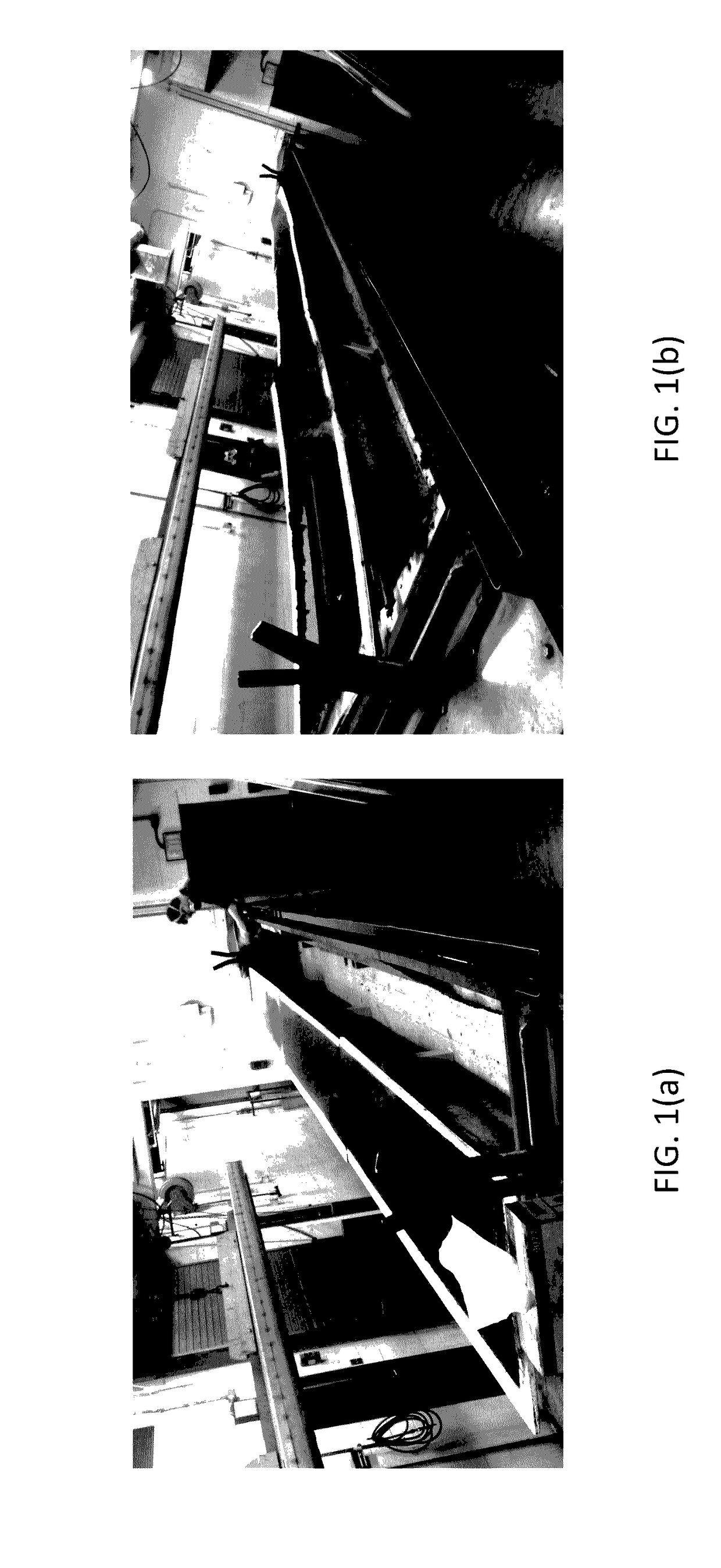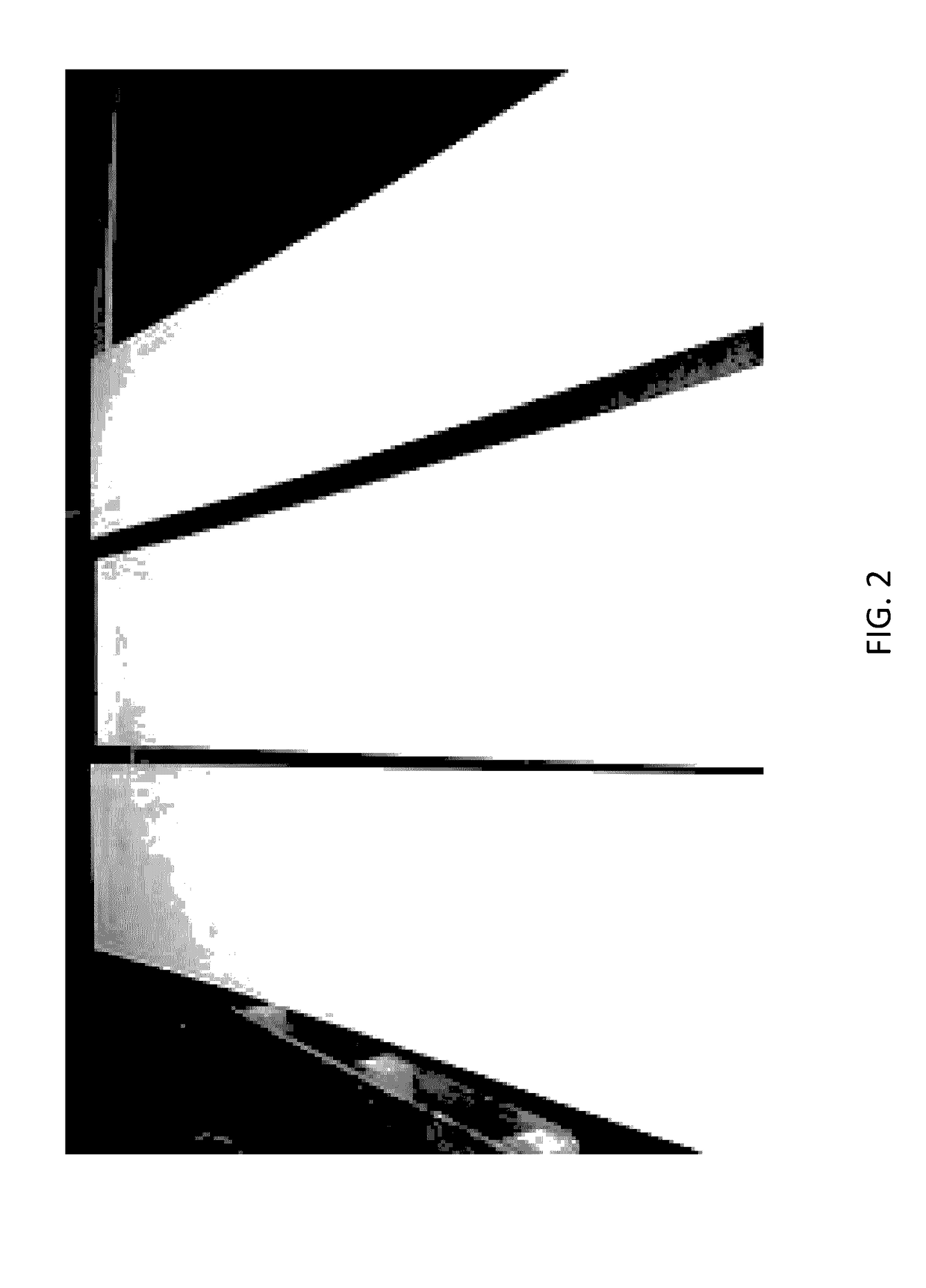Methods of conferring fire retardancy to wood and fire-retardant wood products
a technology of fire retardancy and wood products, applied in the field of fire retardant wood products, can solve the problems of significant human injury and death, use of wood and wood products as construction materials, and dollars per year in property damag
- Summary
- Abstract
- Description
- Claims
- Application Information
AI Technical Summary
Benefits of technology
Problems solved by technology
Method used
Image
Examples
examples
Reference Example A
[0056]An aqueous fire-retardant treating solution was prepared by mixing mono-ammonium phosphate (MAP), di-ammonium phosphate (DAP) and boric acid (BA) with water. The concentrations of MAP, DAP and BA in the treating solution were about 1.14%, 3.49% and 0.82%, respectively. So, the total solid concentration in the solution was about 5.45%. The solution was used to treat ¾″ southern yellow pine (SYP) plywood panels using a modified full cell treating cycle. After treatment, the gauge retention of the FR solid concentration in the plywood panels was about 2.0 pcf. The plywood panels were subjected to ASTM E-84 extended 30-minute burn test. The maximum flame distance was about 17.0 feet after 30-min test.
reference example b
[0057]An aqueous fire-retardant treating solution was prepared by mixing mono-ammonium phosphate (MAP), di-ammonium phosphate (DAP) and boric acid (BA) with water. The concentrations of MAP, DAP and BA in the treating solution are about 1.16%, 3.52% and 0.83%, respectively. The total solid concentration in the solution was about 5.5%. The solution was used to treat ¾″ southern yellow pine plywood panels using a modified full cell treating cycle. After treatment, the gauge retention of the FR solid concentration in the plywood panels was about 2.0 pcf. The plywood panels were subjected to ASTM E-84 extended 30-minute burn test. The maximum flame distance was about 7.5 feet after 30-min test.
reference example c
[0058]An aqueous fire-retardant treating solution was prepared by dissolving boric acid, sodium tetraborate pentahydrate, urea, dicyandiamide in water at a ratio of boric acid:sodiumborate:urea:dicyandiamide about 2.1:3.8:1.5:1. The total solid concentration in the solution was about 8.0%. The solution was used to treat ¾″ southern yellow pine plywood panels using a modified full cell treating cycle. After treatment, the gauge retention of the FR solid concentration in the plywood panels was about 3.0 pcf. The plywood panels were subjected to ASTM E-84 extended 30-minute burn test. The maximum flame distance was about 11.5 feet after 30-min test.
PUM
| Property | Measurement | Unit |
|---|---|---|
| flame spread distance | aaaaa | aaaaa |
| length | aaaaa | aaaaa |
| length | aaaaa | aaaaa |
Abstract
Description
Claims
Application Information
 Login to View More
Login to View More - R&D
- Intellectual Property
- Life Sciences
- Materials
- Tech Scout
- Unparalleled Data Quality
- Higher Quality Content
- 60% Fewer Hallucinations
Browse by: Latest US Patents, China's latest patents, Technical Efficacy Thesaurus, Application Domain, Technology Topic, Popular Technical Reports.
© 2025 PatSnap. All rights reserved.Legal|Privacy policy|Modern Slavery Act Transparency Statement|Sitemap|About US| Contact US: help@patsnap.com


